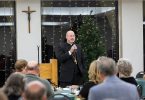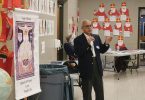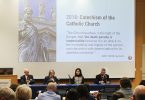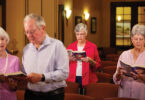
Two archdiocesan seminarians take us inside Kenrick-Glennon
by Jack Figge
Special to The Leaven
ST. LOUIS — The bell chimes, kneelers clank against the pew, cassocks swoosh and 30 seminarians begin a simple hymn. These sounds greet the ears of each seminarian at Kenrick-Glennon Seminary as they begin their day with Mass.
When a young man enters the seminary, he begins an intense seven to nine years of intellectual, pastoral, human and spiritual formation. For seminarians of the Archdiocese of Kansas City in Kansas, many of those years are spent at either St. John Vianney Seminary in Denver or Kenrick-Glennon Seminary in St. Louis, where they receive formation in preparation for ordination.
In a recent address to seminary formators and seminarians from Saint Mary Seminary in Cleveland, Pope Francis challenged them to focus on three principles: listening to God, giving witness and walking with one another in their daily life at the seminary.
Listening to God
At 5:40 a.m., College I student Jimmy Mendoza, a parishioner of Holy Spirit in Overland Park, awakens to his blaring alarm clock. Rolling out of bed, he throws on clothes, buttons up his cassock and rushes down the staircase, entering the St. Charles Borromeo Chapel at precisely 6 a.m., still yawning . . . just in time for the college seminary Holy Hour.
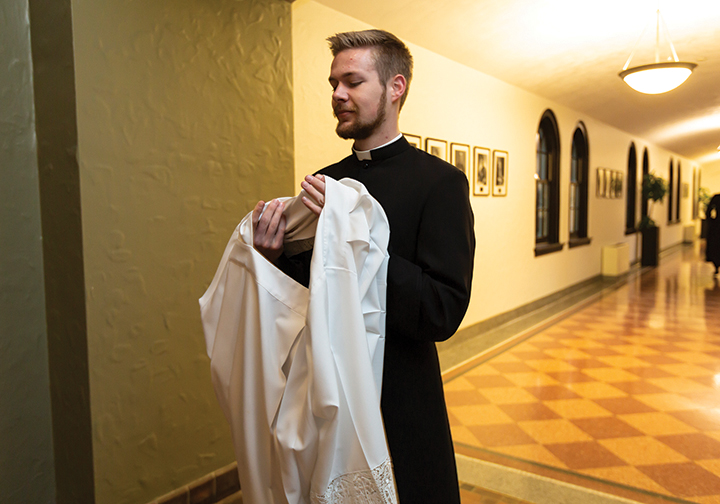
Down the hallway, Theology II student Will Sutherland, a parishioner of Most Pure Heart of Mary in Topeka, enters the St. Joseph Chapel. Arriving wide awake, as he chooses to wake up at 5 a.m., he joins the pre-theologians and his fellow theology students for a silent Holy Hour, morning prayer and Mass. So begins another day for these two seminarians.
“I love the opportunity to get to start every day with two hours of prayer, with the Holy Hour and then Mass,” said Mendoza. “That’s just such a great way to start my day and order it around prayer. The structured prayer time is something that I really missed when I went off to college for a year, and I’m glad to have that now.”
A seminarian’s day not only starts with prayer — it revolves around it. From praying at the beginning of class, pausing at noon for the Angelus, to ending the day with communal night prayer, prayer suffuses his schedule.
In fact, from the moment a student first enters the seminary, formators and spiritual directors challenge and assist them to develop a deep and rich prayer life — key to listening to God and building a relationship with him.
“When a seminarian develops a relationship with God through a deep prayer life, what that man comes to know is that he’s loved by God,” said Father Jason Schumer, vice rector for Cardinal Glennon College. “Upon receiving that love, then he’s able to share that love. That sharing of love is witnessing the Gospel.”
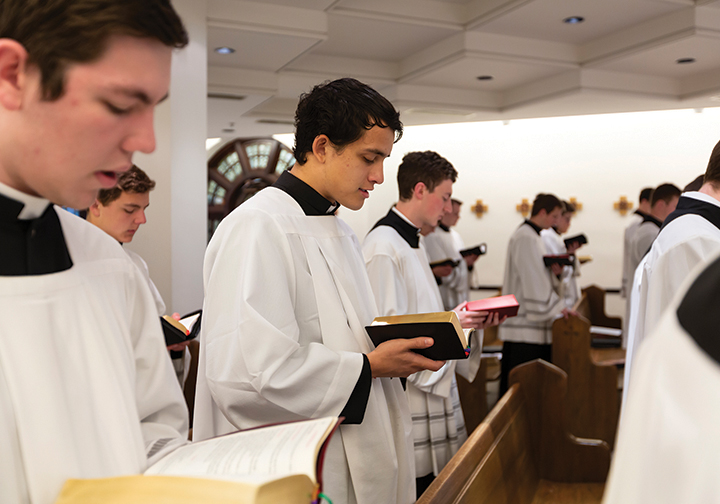
Slowly drifting out of the chapels, the seminarians head to breakfast. There, they each eagerly greet James, the custodian, enjoying his jokes and casual commentary as they wait in the breakfast line. Once seated, conversation flows, with the seminarians constructing an elaborate comparison between the seminary and a high school football program to the young College I students listening to the stories of Father Donald Anstoetter, who joined them for breakfast.
“The structure of [a] seminary opens up the potential for a lot of depth in relationships with God and with our brothers here,” said Sutherland. “There’s just a lot of intentional time that we spend with God in prayer and then with our brothers at mealtimes.”
While the seminarians would love to stay and chat all day, the time comes for Mendoza and Sutherland to head to their first period class. Sutherland embarks on the short walk to Room 105 for class. Mendoza, however, joins other college students for the trek down to St. Louis University, where College I and II students take many of their classes.
While the drive takes a mere 15 minutes, the seminarians embrace every second of it, choosing to use the time to foster deeper friendships with the other men.
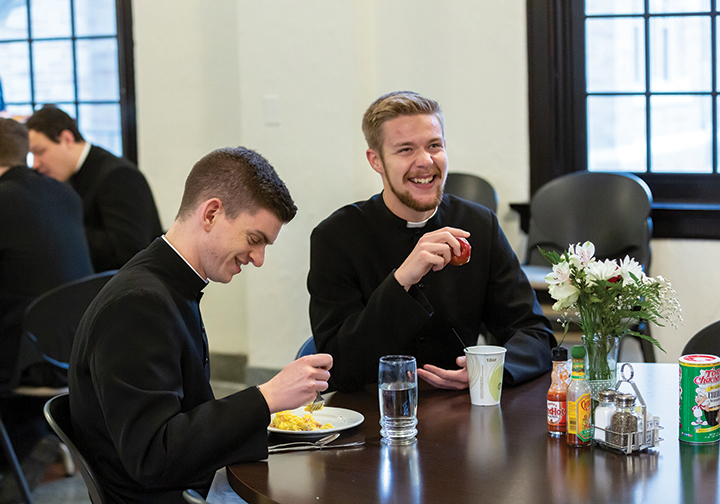
Mendoza climbs into a gold Ford van with four other seminarians. Immediately, the driver leads the group in praying a blessing of travelers.
Once they say Amen, though, the driver turns on a designated playlist depending on the day of the week — Tuesday means the seminarians jam out to Taylor Swift and, of course, Friday means that Rebecca Black’s “Friday” is the only song they listen to.
Giving witness
Walking into the classroom at St. Louis University’s Catholic Studies Center, Mendoza provides a joyful witness to the SLU college students that are in his Catholic Intellectual Heritage class. The teacher Father Matthew Baugh tells everyone to settle down, and Mendoza takes his seat, a fellow seminarian on his left and a SLU student on his right.
“While at SLU, I love the opportunity to get to engage with students my age in great conversations and let them know that someone truly does care for them,” said Mendoza. “Even if we don’t end up talking about Jesus, I love just letting them know that they are seen, known and loved.”
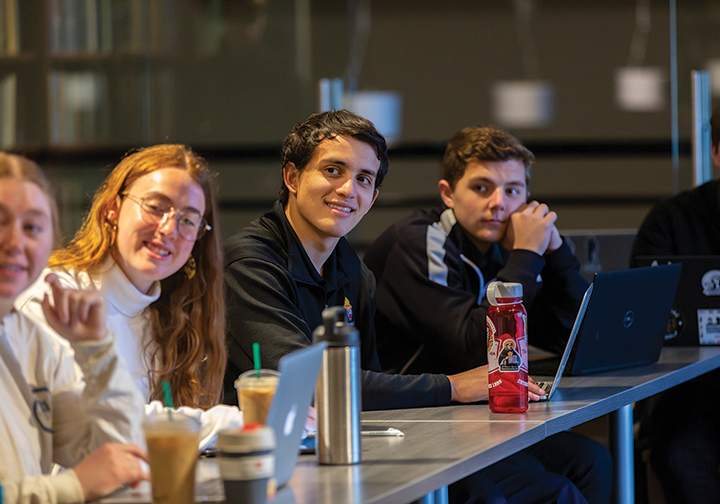
Back at the seminary, Sutherland sits in the front-right corner of Dr. Lawrence Feingold’s Creation and Eschatology class. Even though future priests fill the room, classroom shenanigans persist, with seminarians passing notes, cracking side jokes and a few even struggling to stay awake.
Unfazed by the antics, Feingold continues his discussion on heaven, hell and purgatory, even incorporating a pastoral challenge for his students — to motivate future parishioners with a positive portrayal of ideas — into his lesson.
“The beauty of teaching at a seminary is that the things that are in the syllabus are things that are in the Catechism [of the Catholic Church]. And then, I have to help mold the lives of the future faithful — presuming that these guys get ordained — so that they may be able to present the faith to their future congregation in a way that will be attractive to [them],” said Feingold. “If I present class without that perspective, then I am not doing my job as a seminary formator.”
After class, Sutherland joins many of his brother seminarians for a special lunch in the Father Kapaun Student Center. Indulging in a catered Chinese meal, the seminarians gather to listen to Father Shane Deman, vice rector for formation, who leads the seminarians in a reflection about their participation at the recent SEEK conference. Many seminarians shared that while the speakers were insightful, the most powerful moments of the week came through the interactions they had with other conference attendees.
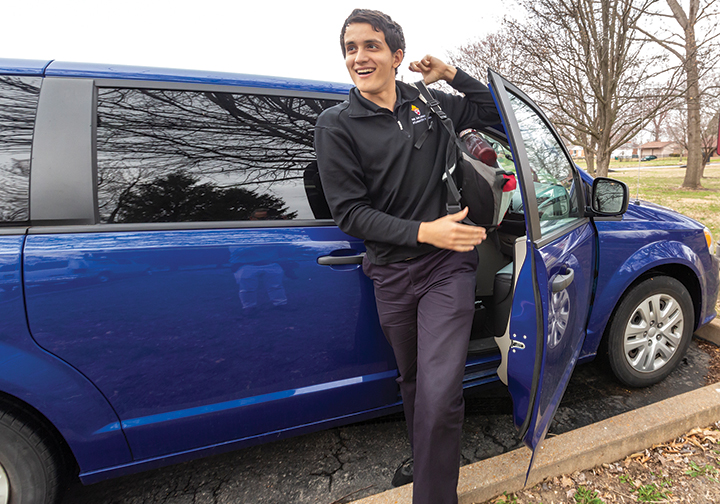
Apostolic works, such as encountering retreat attendees, serve as a critical component to a seminarian’s formation. Different stages of formation task seminarians to do various apostolic works.
As a College I student, for example, Mendoza visits with two residents at a nursing home once a week. Sutherland, as a Theology II student, received a parish assignment at the beginning of the year.
There, he serves in a variety of capacities every Sunday, from serving at Mass to bringing Communion to the homebound.
“To offer a ministry of presence on these Communion calls where I’m just able to kind of pay attention to them and have nice conversations has been pretty neat,” said Sutherland. “It’s almost been like I am a taxi driver for God.”
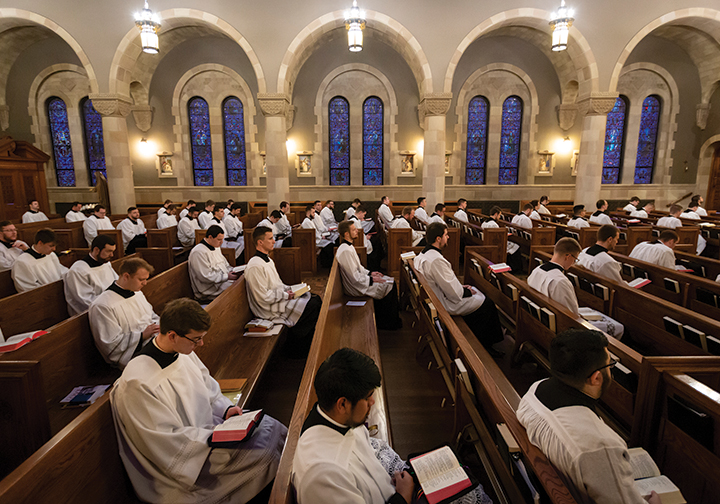
Walking with one another
Once classes and apostolic works conclude for the day, Mendoza’s and Sutherland’s schedules become more relaxed. Other than weekly all-college formation meetings, individual meetings, dinner, night prayer and any other irregular mandatory meetings, the rest of the day is theirs.
After classes, many seminarians head to the library to work on homework. Like the typical college student, many seminarians dread those hours.
“When I’m just bogged down with homework, that can kind of be a non-favorite part of the day,” said Mendoza. “It draws me away from the community when I am trying to focus on my own personal homework. And that’s something that I want to be able to work on — being able to know when’s a good time to study and when’s a good time to be with others. Because they’re both important.”
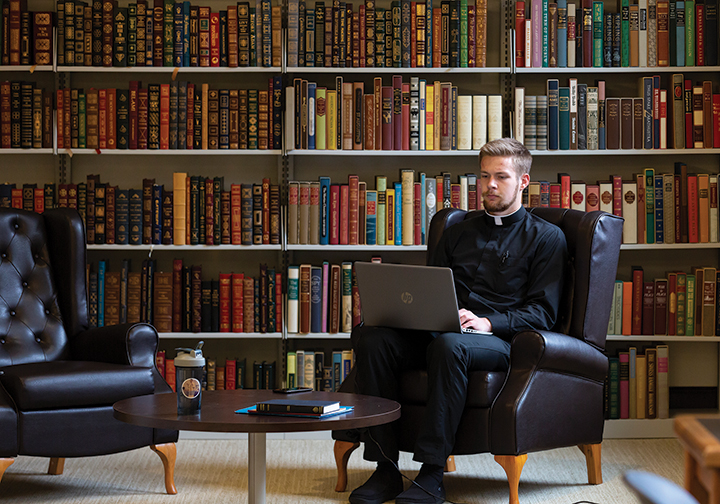
Beyond homework, a seminarian dedicates the rest of his day to building relationships with his brother seminarians. Constructing fraternal community and relationships are central pillars to seminary formation.
“The most important thing about formation is just accompanying the guys and being with them throughout the day,” said Father Schumer. “And there’s a lot of different encounters we have with the guys through individual formation, meetings, formation conferences — those are kind of pivotal moments. And so, just the more that I get to know the guys and they get to know me, and they learn to trust and open their mouth, that’s kind of how the formation happens.”
After he finishes his homework, Mendoza heads to the private quarters, finding a group playing cards in the lounge. Immediately, they invite Mendoza to join in 10-point pitch, a favorite card game in the seminary.
Sutherland swaps his clerics (black pants, black shirt and clerical collar, which the seminarians wear in class)for athletic clothes, then heads outside, where he finds a group of seminarians playing pickleball. He jumps into the rotation, striking up a conversation with the other players.
“I always love either getting outside for a walk, going to the gym and lifting, or playing sports outside,” said Sutherland. “There are a lot of athletic guys in the seminary, and I am not necessarily athletic by nature. But I enjoy being able to feed off of their energy and taking part in the games.”
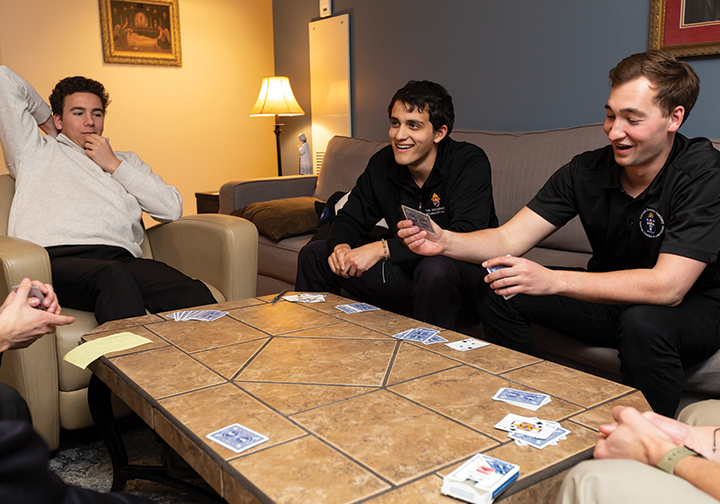
As the day draws to a close, the seminarians all head to a family-style dinner, enjoying conversation with the other seminarians from the archdiocese. Then, all the seminarians file into the chapel one more time for night prayer.
Heading upstairs to his room, Mendoza strikes up one last conversation with a fellow seminarian. While it begins with a simple ‘How was your day?’ the conversation quickly turns deep as the young men share about the ways the Lord has been moving within their heart.
“Just that raw vulnerability that we have is incredible — that we can so easily jump into a deep conversation even at night when you’re tired,” said Mendoza.
“The fact that right after prayer you can then engage in community and that’s how you get to end every day?” he continued, “I consider that a big gift that we get to start and end every day with the Lord and with community.”



